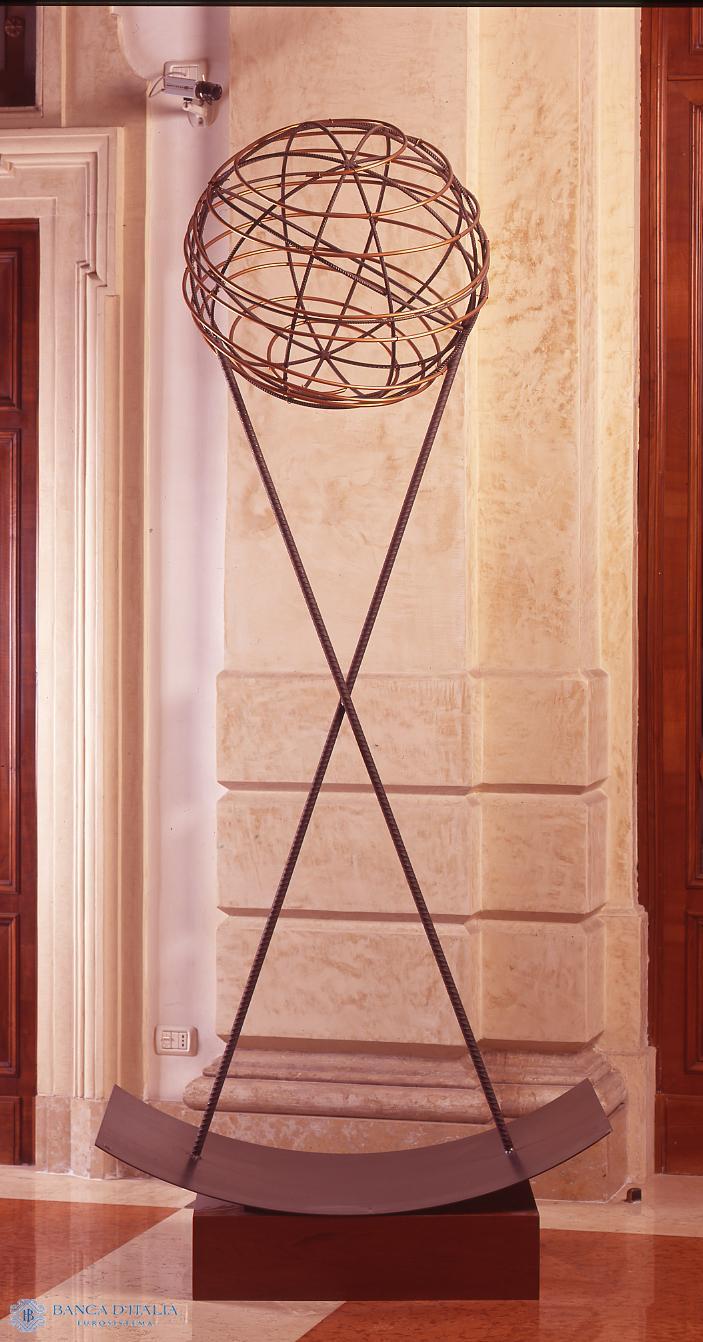Eliseo Mattiacci was born in Cagli in 1940. In 1964 he moved to Rome where he joined the group known as the “Piazza del Popolo School”, also attended by artists such as Schifano, Festa, Ceroli, Pascali, Angeli and Fioroni. Mattiacci was particularly close to Pascali and, following in his footsteps, created paradoxical “scenarios” that emphasized the physical bulk of the objects he then amplified into large-scale works. He debuted at the Tartaruga Gallery in 1967, where he presented an articulated nickel-plated yellow enamelled tube measuring 150 metres that he carried through the city’s streets followed by a procession of friends, artists and critics. Modified and structured differently, it was subsequently presented at other collective shows including the one held jointly with Pascali in Rome’s National Gallery of Modern Art. This sense of entanglement and complexity recurred in many of Mattiacci’s works, and in its various versions the tube became the artist’s most cited and memorable exhibit. “Eliseo Mattiacci,” wrote Vittorio Rubiu in 1968, “is the inventor of a second ‘Tubism’ (the first, as everyone knows, was that of Léger).” The great tube whose volutes occupied an entire art gallery resonated strongly at the time, provoking a “scandal” that was counterbalanced by the enthusiasm of the avant-gardists. “The gallery makes a work of art of the tube,” continued Rubiu. “The tube that sticks out of the window, the tube that descends the stairs, the tube that with the right measurements extends as far as the museum of modern art, the yellow of the tube that against the green of the grass seems even yellower. And there is not just the yellow, with its current of vital energy; there’s a line that unwinds slowly, like a drawing that’s gotten out of hand.” Mattiacci, whose poetics drew on the “realism” of modern life, used everyday objects and industrial materials that he manipulated and reassembled in order to suggest new tactile sensations, exalting the force of gravity and the weight and magnetism of the various materials. From 1971 onwards, he also staged several “actions” developed from the performances Pascali had introduced several years previously. At the end of the 1980s, he opened the Centre for Contemporary Sculpture at Torre Martignana in Cagli which, amongst others, houses works by Gastini, Icaro, Nunzio, Nagasawa and Pascali.
Eliseo Mattiacci
Eliseo Mattiacci (Cagli 1940)
20th century AD


